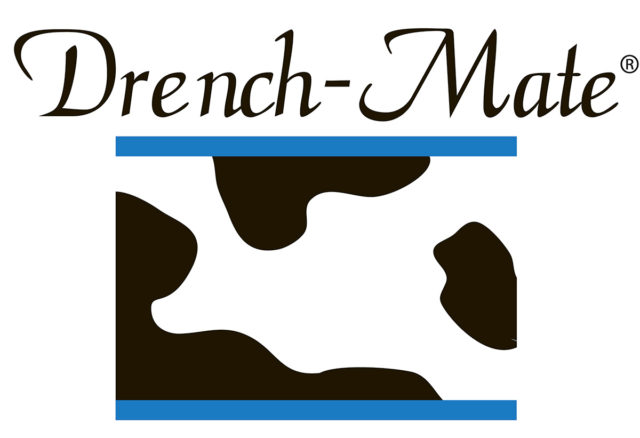It’s not over the moon, but the number of cows in U.S. dairy herds has jumped to a two-decade high. Combined with increased output per cow, estimated August 2016 U.S. milk production was up 1.9 percent compared to the same month a year earlier, according to USDA’s monthly milk production estimates.
Since falling below 9.2 million head in late 2013, U.S. cow numbers have been on a 32-month upward trend, reaching the highest total since the second quarter of 1996.
August summary
Nationally, August milk production was estimated at 17.735 billion pounds, up 1.9 percent from August 2015. The number of milk cows was estimated at 9.36 million head, 45,000 head more than August 2015, and 16,000 head more than July 2016. Production per cow averaged 1,895 pounds for August, 27 pounds more than August 2015.
August milk production in the 23 major states was estimated at 16.662 billion pounds, also up 1.9 percent from August 2015. The number of milk cows in those states was estimated at 8.68 million head, 43,000 head more than August 2015, and 15,000 head more than July 2016. Production per cow averaged 1,920 pounds for August, 26 pounds more than August 2015 and the highest production per cow for the month of August since the 23-state series began in 2003.
July 2016 revised production in the major states, at 16.876 billion pounds, was up 1.7 percent from July 2015. The July revision represented an increase of 48 million pounds (0.3 percent) from last month's preliminary production estimate.
Cow slaughter down, heifers plentiful
The growth in cow numbers comes in a year when U.S. annual average all-milk prices are the lowest since 2009.
“Despite some really low milk prices, milk cow numbers have been increasing,” said Bob Cropp, professor emeritus at the University of Wisconsin – Madison. “Since the beginning of the year, cow numbers have increased by 40,000 head. There are plenty of replacements to increase the cow numbers and cow slaughter has been 1.4 percent lower thus far this year.”
The largest year-over-year increases in cow numbers are in Idaho, Michigan and Texas, with Colorado and South Dakota not far behind (Table 1).

Texas rebounds from Goliath
Texas cow numbers, which had slumped to 455,000 after Snowstorm Goliath in December 2015, are now at 487,000 head, an increase of 32,000 since February and up 12,000 compared to July.
As a result, Texas led all states in milk production growth compared to a year earlier, with milk up 11 percent, cow numbers up 25,000 head and milk per cow up 5.3 percent, Cropp said.
Some of those Texas cows are migrants from California. California’s milk production continues to fall below year-ago levels, down 1.7 percent in August, the result of 11,000 fewer cows and 1.1 percent less milk per cow.
Elsewhere in the West, Colorado’s year-over-year milk production was up 6.9 percent, with 8,000 more cows and 1.1 percent more milk per cow. Idaho’s production was up 4.9 percent, with 13,000 more cows and 2.6 percent more milk per cow.
Michigan continues a strong increase in production, up 6.6 percent with 12,000 more cows and 3.5 percent more milk per cow. South Dakota’s milk production also continues to increase, up 5.4 percent with 8,000 more cows, but 1.8 percent less milk per cow. Wisconsin cow numbers were down 2,000 head, while Minnesota cow numbers were up by 2,000.
Milk prices, outlook
Milk prices, which had a good run-up in recent months, aren’t holding, Cropp said.
Supported by strong cheese prices, the Class III price had increased to $16.91 cwt in August. However, September cheese prices weakened, pressured lower by large storage inventories and continued weaker exports. Despite stronger dry whey prices, the September Class III price – to be announced Oct. 5 – will be close to $16.30 cwt, falling into the mid-$15s per cwt for the remainder of the year, Cropp said.
Current Class III futures remain in the $16s per cwt over that period, but that won’t be supported unless cheese prices rally, he warned. Current Class III futures are below $17 per cwt for all of 2017.
Class IV prices are also being pressured lower, with butter price declines more than offsetting stronger nonfat dry milk prices. Large stocks and lower exports are weakening butter prices. Even though nonfat dry milk stocks are above the five-year average, they’re down from a year ago, and U.S. prices remain more competitive on the world market, helping boost exports.
Cropp said the September Class IV price will come in around $14.20 per cwt.
Reason for optimism?
There is some reason for optimism. Domestic butter and cheese sales are expected to remain good, and there are signs dairy exports will improve. European Union milk production, which was running as much as 6 percent higher than a year ago, dropped below year-ago levels in June and is expected to remain lower for the reminder of the year. Milk production is expected to be below year-ago levels for Australia and Argentina and up just slightly for New Zealand.
China has been a little more active on the import market, and is expected to be more so in 2017.
“The expected slower growth in world milk production and stronger demand should increase world prices, making U.S. dairy products more competitive and improving exports,” Cropp said.
So despite the less optimistic outlook for the remainder of 2016, Cropp forecasts milk prices should improve as we move into 2017, with the Class III price back in the $16s per cwt, perhaps even reaching $17 per cwt by the fourth quarter. ![]()

-
Dave Natzke
- Editor
- Progressive Dairyman
- Email Dave Natzke





